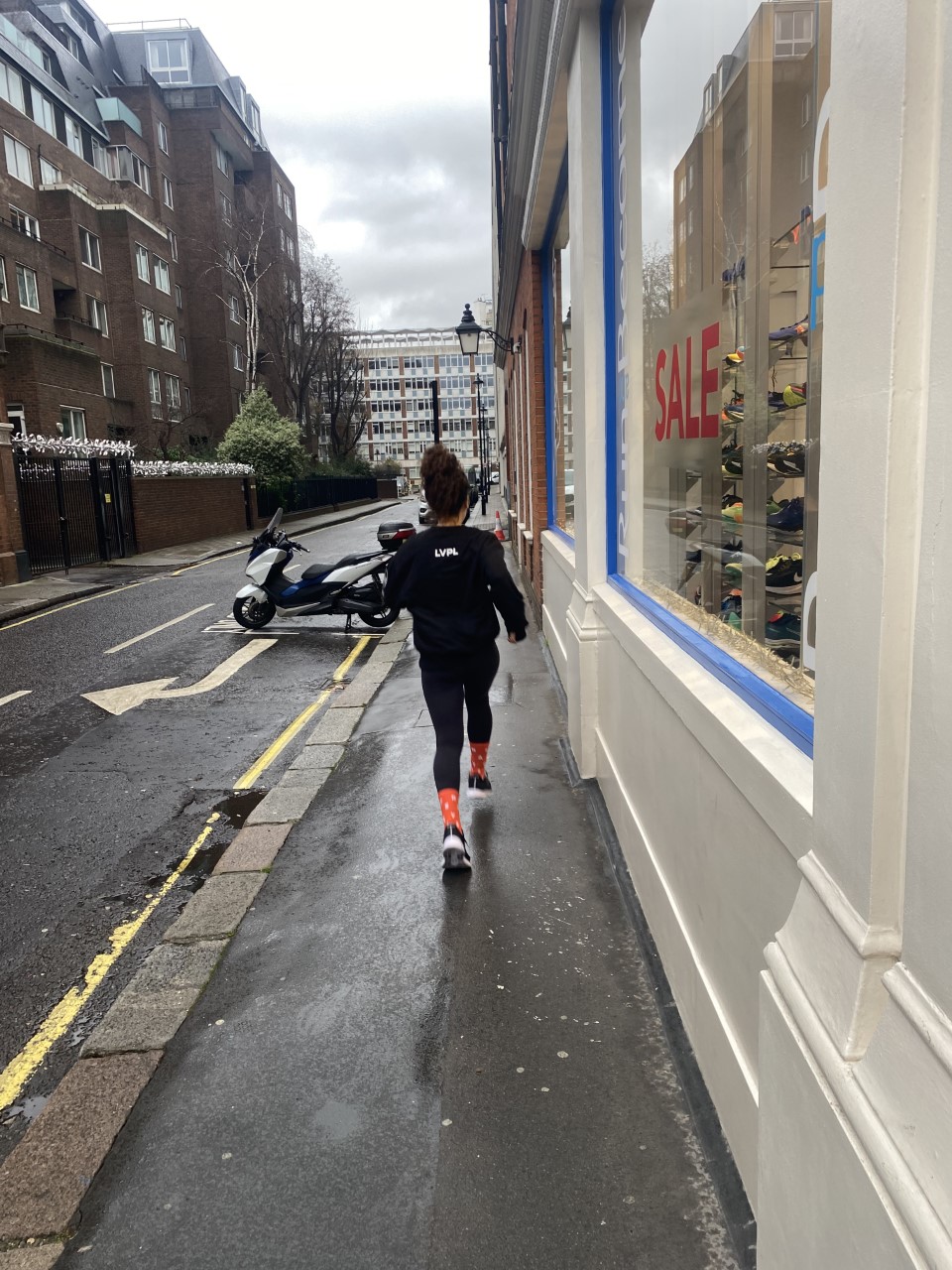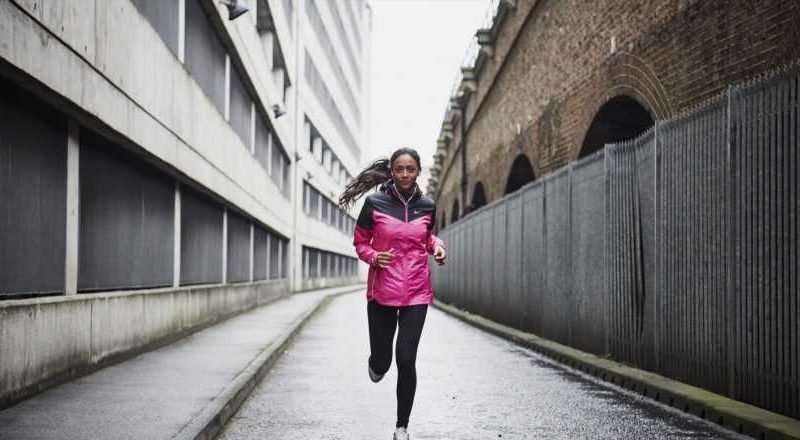January Kickstarter: this is what a really good gait analysis should feel like
This January, we’re on the search for quick, accessible hacks to kickstart 2023 in the strongest way possible. Today’s cardio kickstarter: everything you need to know about gait analysis.
Every runner knows that the most important piece of kit is a decent pair of trainers. I’ve known loads of people who try to get into running but give up after a few weeks because of blisters, shin splints and hip pain – often caused by wearing the wrong trainers.
This is where the whole ‘running is the cheapest, most simple sport’ rhetoric goes out of the window. On paper, sure, running is pretty straightforward. But it’s also a science. The way you move is unique to you and if you try to force your feet into shoes that don’t cater to the way you run, you’ll quickly find yourself battling all kinds of aches and pains.
So, how do you find that perfect pair of kicks? The answer is to get a good gait analysis.
You may also like
The myth of overpronation: why overpronating runners don’t need to be fixed
What is a gait analysis?
Google anything about running and the first thing that’ll come up is a recommendation to have your gait analysed. All that means is having a running professional assess the way in which you jog and move to determine what type of shoe would best support you.
They might see that you have flat feet, are prone to pronation (where the foot rolls in), have a weaker right glute or heel-strike (hitting the pavement heel-first). Or they might conclude that you have a totally neutral running style. All of those things require something different from a pair of shoes. A toe striker with neutral pronation might struggle to run in a pair of ultra-cushioned, supportive shoes, while that same pair might be perfect for a mid-foot, pronating runner.
If you took up running over the pandemic, then you may have bought your trainers online – and maybe you’re loving your purchase. But a gait analysis is still probably a good idea because it’ll help you to understand how you run and your specific shoe needs.
Why is getting a gait analysis so important?
I first got into running ‘seriously’ back in 2017, when I found myself suddenly training to run the London Marathon in a short space of time. My mum bought me a new pair of trainers, and off I went. I’d struggled with quite a lot of pain but I put that down to running long distances for the first time. It was only when I tried a totally different style of trainer a few months after the race that I realised the pair I’d been running in were way too heavy, clunky and cushioned for me. They’d added to my calf pain, put me at risk of rolling my ankles and weighed me down.
A gait analysis would have suggested a different pair of shoes and saved me two rolled ankles – and a whole load of pain.
What does a good gait analysis look like?
I had my last gait analysis as a teenager, and although I own at least 15 pairs of trainers (thanks to my job), I run in just two. One is a carbon-plated racing shoe that I try to avoid wearing too often, and the other is a weather-proof pair of Nikes that don’t feel totally natural to run in.
So, I headed down to Run and Become, a running shop in Belgravia, for a proper consultation. And despite all those shoes under my bed, I left having bought a new pair that felt as if they’d been designed especially for me.
Here’s why the gait analysis was so good and what you should look out for when going for one.
There are plenty of runners waiting to be analysed
You know how people say that an Italian restaurant is bound to be good if it’s packed out with Italians? Well, it’s the same with running shops. Run and Become was packed with runners of all ages, sizes and, by the looks of things, experience. You had women being fitted for their first marathons, pensioners looking to take their long-distance running to the next level, 5k-ers after faster kicks and total newbies getting started. We booked ahead – a stroke of luck as the queue, by the time we arrived, was estimated to be an hour. If so many runners are willing to wait to be seen, you know it’s going to be worth it.
You get to try on lots of different styles and brands of trainer
I had a joint analysis with my partner and we each tried on six pairs initially, with Lorin being offered an extra couple of options that were wider and longer.
They make you run outside in different pairs
Most standard gait analyses happen on treadmills in the middle of a running store. It’s not the most comfortable experience if you’re new to running and, in my mind, it’s not the best way to accurately see how you move either. Some physios get you to run on a treadmill (like R&D Physio in Nine Elms), but they’ll have you running for 10 minutes at a time to allow you time to settle into your natural rhythm (which it’d be impossible to do on a track or road). But in running shops, you’re on the treadmill for a matter of seconds before being diagnosed.
This analysis, however, saw us heading outside in the wind and rain to put six pairs of brand-new trainers to the test. That allowed the tester to assess how we run, how our feet move, the direction of the knees, etc – all on the same kinds of surface we usually run on.

I began with a pair of neutral trainers to show how I run without any assistance. From that, I was told that my particular running style (toe-striking, neutral gait) would benefit from a light, minimally padded shoe. My partner, on the other hand, was diagnosed with quite pronounced pronation and was recommended more cushioned, supportive styles. Watching the difference in how he ran between the first neutral pair and the second cushioned pair was remarkable; it’s amazing just how much more comfy and confident people become when they’re wearing shoes that actively support them.
It’s not just your running that gets analysed, but your knees, hips and feet
After running in the first pair, I was asked to stand straight, feet hip-width apart. The tester stood back and asked me to start squatting – looking at the direction my knees moved in to see if they tracked straight over my toes (neutral), caved in (pronation) or outwards (supination). She concluded that my knees moved in a straight line thanks to having quite a strong upper body and core. My right knee was slightly more inwards moving than my left, suggesting perhaps that my right glute and ankle are weaker than my left. My partner’s knees, on the other hand, leant in significantly, which confirmed the initial pronation diagnosis.
There’s no time limit on the consultation
We were at Run and Become for at least an hour, if not longer. At no point was there a suggestion that time was ticking, and the people who turned up around the same time as us were still being assessed by the time we were at the till, suggesting that a good analysis takes as long as it takes.
No one pushes you to buy anything
Despite the length of time spent in the store, there was no hard sell or even any attempt to sell me any of the shoes I tried on. I could have comfortably walked away having had the analysis for free. But running in the suggested styles felt so good that I was only too happy to buy the pair that felt the most comfortable.
You leave feeling excited to run
Few actively look forward to going on a long run, but the rest of the day went by in anticipation of what Sunday’s 10k would feel like in my new Sauconys. Sure enough, after the first kilometre (which feels hard whatever you’re running in), my feet felt light, supported and full of energy – despite the whipping winds. I felt like I could have comfortably kept going once I’d got home and they didn’t feel as though they needed breaking in, perhaps because they’re so light. I can’t wait to try them out again this weekend.
Images: Getty
Source: Read Full Article
